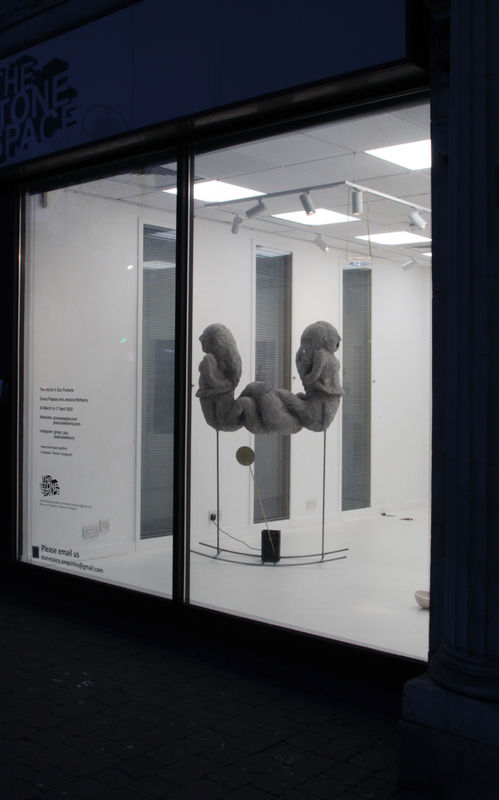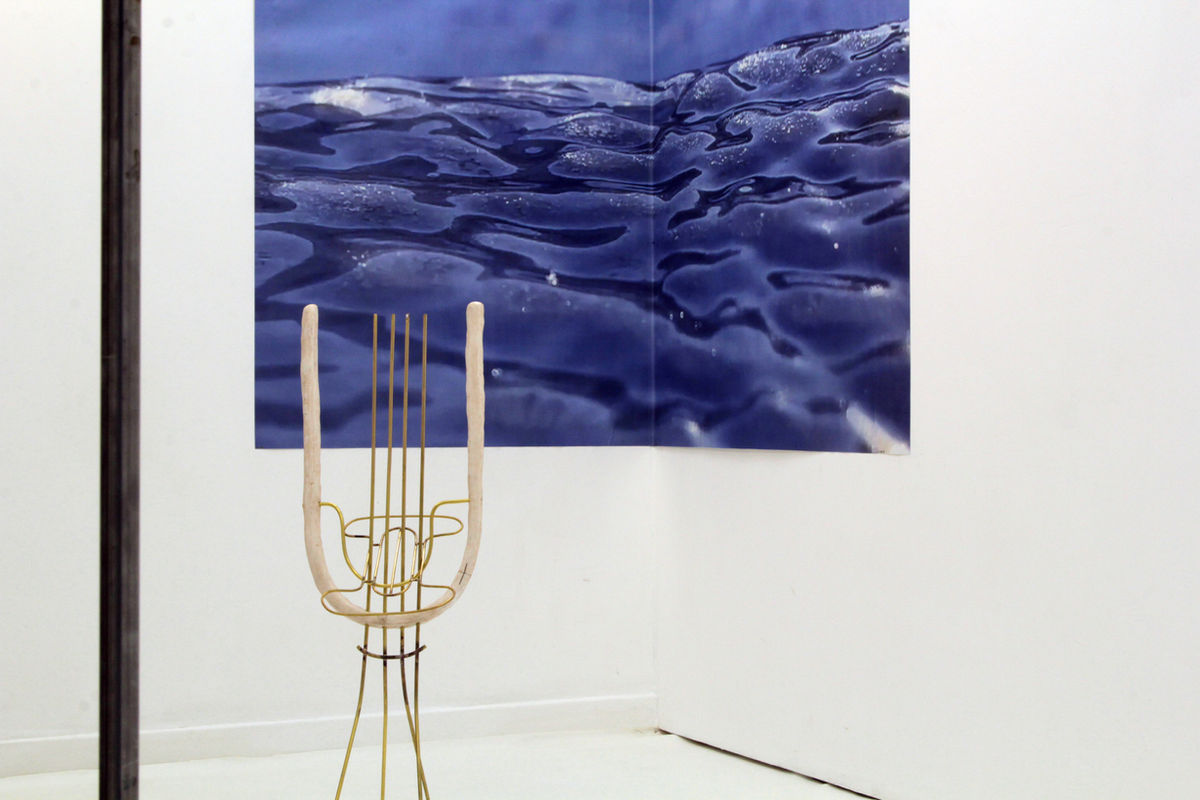
The World In Your Pocket
The World in Our Pockets is a collaborative exhibition between Grace Pappas and Jessica Wetherly at The Stone Space that brings together their mutual interest in navigation and the dilation of time.
The work is based on research from the archives at Greenwich Observatory and Science Museum exploring the evolution of technology to dismantle the accumulation of knowledge found within smart devices. The work refers to kinetic instruments and analogue mechanics that explode the black box of the iPhone. In the exhibition we use symbolism and the transcendence of objects through culture to explore differences between digital and physical spaces that enable us to navigate the world around us.
Hundreds of years of observing the planets, of striving to discern our place within the universe has now been condensed into elaborate equations, hidden in code and stored in these smart devices we use everyday without a second thought. We are seduced by our desire and insistence on adapting and relying on technology. We can travel thousands of miles across the world without any appreciation for the majesty of such a feat. In becoming more detached and disillusioned from the knowledge we hold in our hands, becomes an affinity with the solitary beam of blue light radiating out into an unknown virtual sphere like a beacon, a lighthouse, a momentary blank thought as the data loads onto our screen. Within the exhibition we focus on a few keys components which traverse time ancient technology carefully hidden behind a screen of liquid crystals:
Timekeeper;
Clocks and watches have evolved through their required use, sundials track the rhythm of a day; water clocks in a ceramic vessel were developed for courthouses in ancient Greece to track thirty seconds elapsed for every person's positioning during the debate. The pendulum is an escapement mechanism and a pacemaker for modern clocks. It releases the stored potential energy within the clock (either of weights or of a tensioned spring) one click at a time for every period of motion. The principles are simple and reliable as well as easy to manufacture as the only variable is the length of its arm.
This ceases to work the moment you place a pendulum clock on a rocking boat. Accurate timekeeping aboard a ship is crucial in pinpointing the longitude of the ship. In order to calculate it, people aboard need to know the exact time the ship left the port, the current time as well as the elapsed time of travel. Navigators tried placing the pendulums on water beds to counteract the rocking of the boat but this method was only an approximation to the problem and did not reach the necessary accuracy to enable safe travel. It took a nation-wide competition and an inventor John Harisson to develop the first real breakthrough in time keeping. The reverse pendulum rocking the siren figure heads is a salute to the technological challenge that Harrison overcame, releasing us into a new world of navigation and time keeping.
























